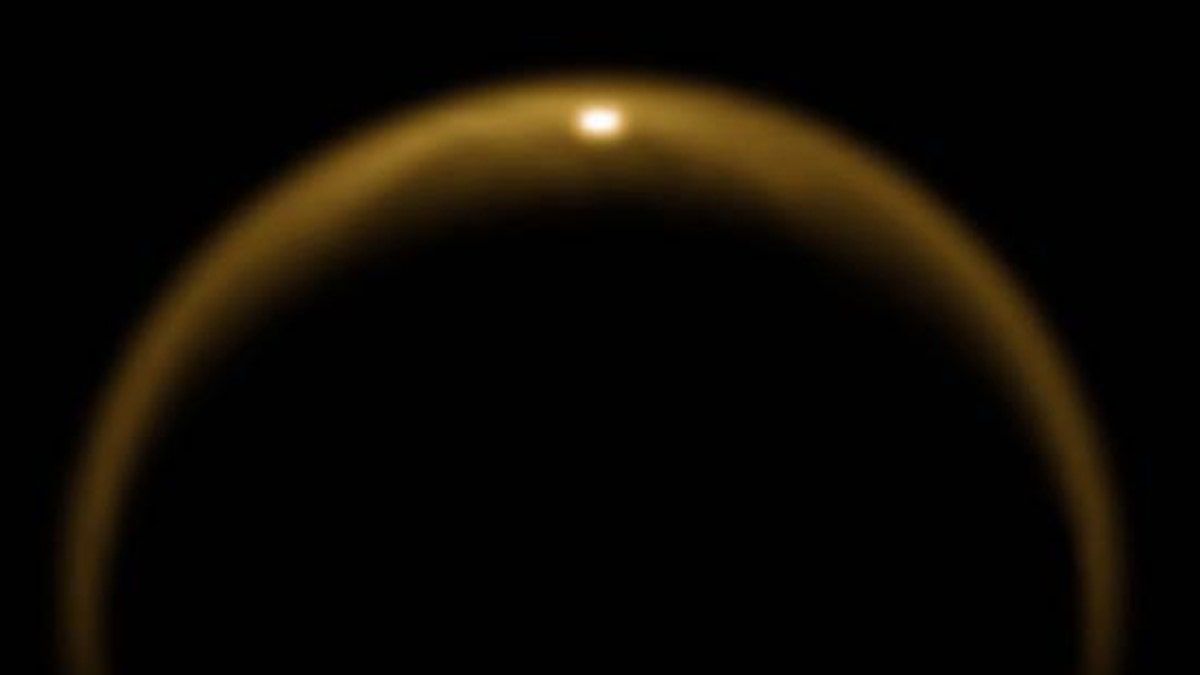
This image, obtained using Cassini's Visual and Infrared Mapping Spectrometer (VIMS), shows the first observed flash of sunlight reflected off a lake on Saturn's moon Titan. (NASA/JPL/University of Arizona/DLR)
NASA's Cassini spacecraft snapped new photos of Saturn's biggest moon Titan during a recent flyby over the moon's northern pole that targeted the home of the cloudy moon's largest methane lake.
Cassini made its closest approach to Titan on June 5 UTC (Friday afternoon, June 4 Pacific time), when it zoomed within approximately 1,300 miles of the giant moon's surface.
Mission scientists at NASA's Jet Propulsion Laboratory in Pasadena, Calif., hoped to get another good look at Kraken Mare, the biggest lake on Titan, which spans an area greater than the Caspian Sea on Earth.
The hydrocarbon lake, which covers about 150,000 square miles is filled with liquid methane and ethane – molecules of carbon and hydrogen atoms.
Titan's lakes are of particular interest to scientists because of the potential for these chemicals to create an environment that could support life. Still, no firm proof of life has been found on Titan.
Cassini took infrared scans of the Titan's north polar region, which was cloaked in darkness for the first several years of the spacecraft's tour around the Saturn system. As northern spring has started to dawn over the area, the lighting has improved, allowing Cassini to get a better look at the hazy moon.
During the flyby, the visual and infrared spectrometer were the instruments of choice during the closest approach, but Cassini's imaging science subsystem cameras also snapped pictures.
Although this most recent flyby is dubbed "T69," planning changes early in Cassini's orbital tour actually made it the 70th targeted flyby of Titan.
Last month, Cassini got close-up glimpses of Titan and Enceladus, another of the ringed planet's moons, in a double flyby. Cassini performed radio science experiments as it passed by Titan and collected data about the moon's internal structure.
NASA launched Cassini in 1997 and the spacecraft arrived at Saturn in 2004. It dropped a European-built lander called Huygens on Titan as part of its joint mission between NASA and European and Italian space agencies. Cassini's mission has been extended through 2017.
Copyright © 2010 Space.com. All Rights Reserved. This material may not be published, broadcast, rewritten or redistributed.
